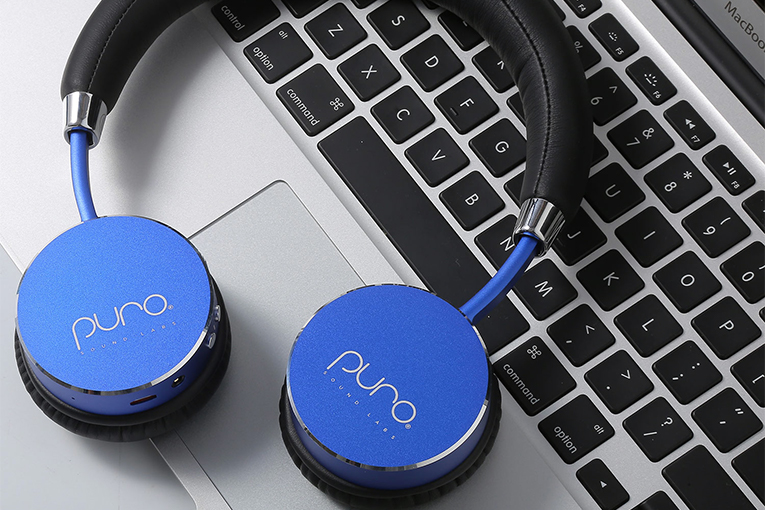Features

- Details
- Written by: Brent Butterworth
When someone on Facebook recently commented, “Compressed audio sounds horrific, and even uncompressed 16/44.1 isn’t great,” I felt terrible. I knew he came to these conclusions not through any sort of careful, unbiased testing, but because the audio industry—manufacturers, press, dealers—has told him he shouldn’t like compressed audio, and that 16-bit/44.1kHz audio is, after decades of enthusiastic acceptance by billions of users, now unacceptable.

- Details
- Written by: Brent Butterworth
In past editions of this series, I’ve interviewed professionals from Dan Clark Audio, PSB, Focal, and HiFiMan to learn their philosophies about voicing headphones. In those articles, the focus was on headphones rather than earphones, simply because earphones are at most a sideline for those companies. This month, we’re focusing on companies that specialize in earphones—which may seem similar to headphones, but in actuality, are radically different from an acoustical standpoint.
Read more: Voicing Headphones, Part 3: Campfire Audio's Ken Ball and 64 Audio’s Vitaliy Belonozhko

- Details
- Written by: Brent Butterworth
In the latest round of debate about MQA, I was dismayed to see the company once again tout its endorsements from mastering engineers. This is an “appeal to authority,” a common logical fallacy. It’s often seen in ads for audio products—the advertiser uses the endorsement of an authority figure (such as a musician or recording engineer) to supplement or substitute for marketing claims based on demonstrable features and benefits. Appeals to authority are even more common in promotions for things like books, movies, and countless consumer products.
Read more: The #1 Red Flag in Audio Articles, Ads . . . and Everything Else

- Details
- Written by: Brent Butterworth
Headphones and smartphones have brought good sound to more people than high-end audio could ever reach. (Also, depending on the headphones, bad sound to more people than high-end audio could ever reach.) But headphones are also exposing billions of ears to sound—often very loud sound—for many hours a day. “Average people are now exposed to as much loud sound in the course of a day as audio engineers have been,” Jodi Sasaki-Miraglia, doctor of audiology and director of education and training for hearing-aid company Widex USA, told me.

- Details
- Written by: Brent Butterworth
A longtime audio-industry friend of mine, whose job straddles the consumer and pro audio realms, called me up a couple of days ago to thank me for my review of the HiFiMan HE400se open-back headphones. After seeing the review on Facebook, he bought a set out of sheer curiosity—they’re only $149 USD—and he actually considered my rave review something of an understatement. “I have headphones that are close to $2000 that don’t sound anywhere near as good as these,” he raved.

- Details
- Written by: Brent Butterworth
The recent closing of New York City’s Lyric HiFi—for decades, one of the most esteemed high-end audio dealerships in the US—portends a dicey future for the high-end audio industry. This doesn’t surprise me, because high-end audio has changed radically in the last 30 years. As I see it, the industry, while certainly capable of producing exciting products that deliver real improvements people would be happy to pay for, focuses too much of its resources on creating products that chase fads instead of pursuing innovation. I think high-end audio writers (and podcasters and YouTube influencers) are mostly to blame.
- Why Buying High-Quality Headphones Is a More Responsible Purchase
- Does It Make Sense to Demo Audio Over the Internet?
- The New Standard That Killed the Loudness War
- Headphones 2020: The Year in Review
- Three Cases Where Measurements Didn’t Work
- How Much Can We Really Tell From Listening?
- Balanced Armatures: Why You Might (or Might Not) Want Them
- The Coming Revolution in Headphone Sound Quality
- Can Accuracy in Music Reproduction Exist?
- The Biggest Lie in Audio
- Voicing Headphones, Part 2: HiFiMan’s Fang Bian and Focal’s Mégane Montabonel
- What Will the Next Generation of Headphones Be Like?
- How Far Have Headphones Come?
- Voicing Headphones, Part 1: PSB/NAD's Paul Barton and Dan Clark Audio's Dan Clark
- How Will Headphone Testing and Reviewing Change in the 2020s?
- What the AKG K371 Headphones Tell Us About "Slow Listening"
- Where Are We At With The Harman Curve?
- Why Headphone Amps Are More Interesting Than Speaker Amps
- 2019’s Most Important Headphone Presentation
- Noise Canceling Is Much More Complicated Than We Thought
- How Does Aging Affect Audio Perception?
- Noise-Canceling Headphones for 17 Cents?
- Is Chesky Dumping Binaural?
- Why My Fi Ain't Hi-Fi
- Latency: A New Concern for Audiophiles?
- How to Read Our Headphone Measurements
- Eardrum Suck: The Mystery Solved!
- Should Audio Gear be Considered Luxury Goods?
- Headphone Equalization Using Measurements
- Why Is It So Hard to Rate Headphones?
- Five Things Headphone Enthusiasts Get Right (and That the Two-Channel Guys Get Wrong)
- The Best Possible Way to Test Audio Products (and Why Most People Don't Do It)
- Will aptX Adaptive Improve Headphone Sound?
- Is the miniDSP EARS the Death of Headphone Measurement? Or its Savior?
- What Are Measurements Good For?
- How Much Noise Do Your Headphones Really Block?
- Why We're Launching "SoundStage! Solo"
SoundStage! Solo is part of
All contents available on this website are copyrighted by SoundStage!® and Schneider Publishing Inc., unless otherwise noted. All rights reserved.
This site was designed by Karen Fanas and the SoundStage! team.
To contact us, please e-mail info@soundstagenetwork.com





